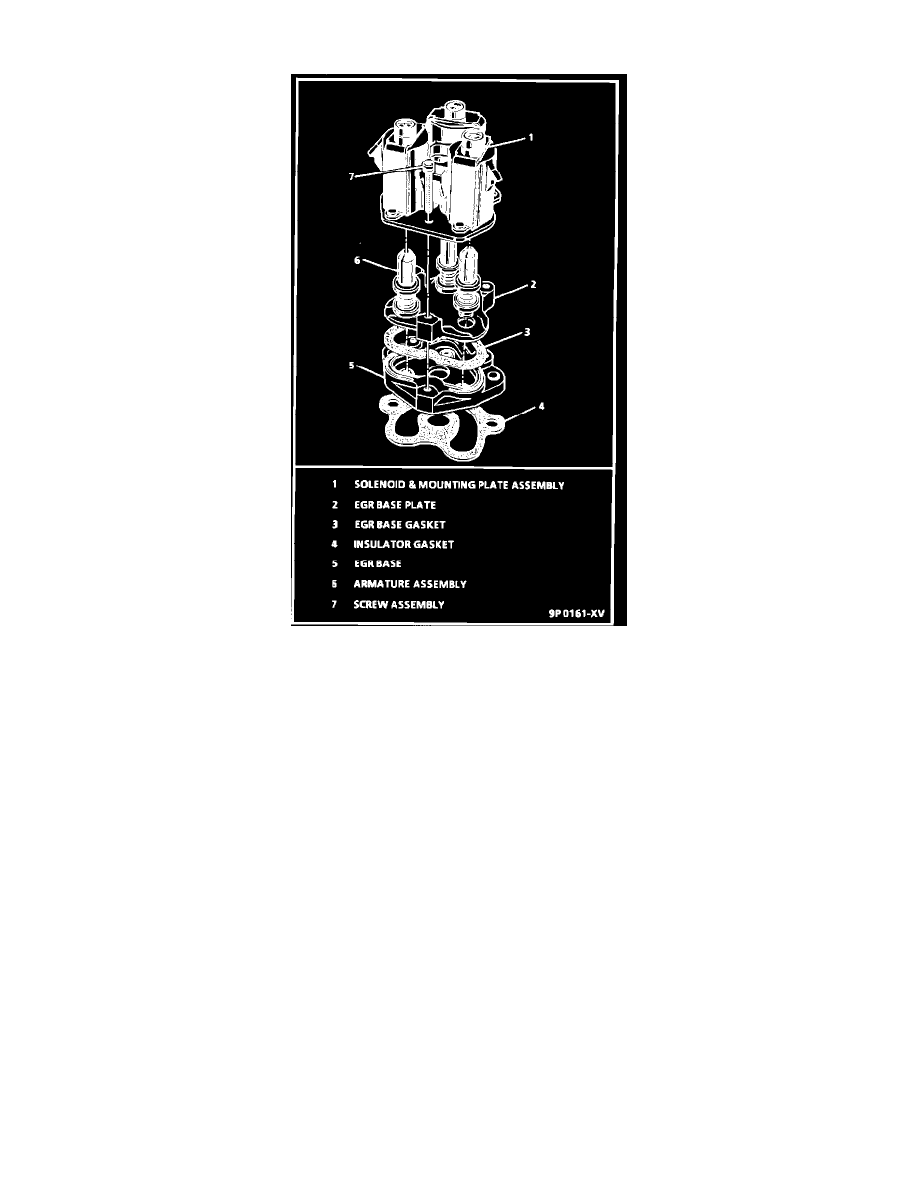J2000/Sunbird V6-191 3.1L VIN T MFI (1994)

EGR Valve: Description and Operation
EGR Valve (Digital)
PURPOSE
The exhaust gas recirculation (EGR) system is used to reduce oxides of nitrogen (NOx) emissions. The atmosphere is made up of mostly Nitrogen, with
a smaller percentage of oxygen, and a mixture of other gases. Oxygen and Nitrogen do not normally combine except at very high temperatures and
pressures, conditions which are present in the combustion chamber especially during hard acceleration. When the engine is under load, the EGR valve
admits a small amount of exhaust gas into the intake manifold to mix with the air/fuel charge. The exhaust gas is essentially inert (contains no fuel or
oxidizer) and reduces peak combustion temperatures and pressures by absorbing some of the heat of combustion without participating in the actual
burn. Greater amounts of exhaust gas are metered in as engine speed and load are increased.
The digitally controlled EGR valve is designed to accurately supply regulated amounts of exhaust gas to the intake manifold, independent of manifold
vacuum.
OPERATION
EGR solenoid valves get battery power when the ignition is turned "ON" and become energized when the control module completes the circuit to
ground. When a solenoid is energized, the armature, with attached shaft and swivel pintle, is lifted and the orifice is opened. Three solenoid valves
control exhaust gas flow from the exhaust to the intake manifold through three orifices, to produce seven combinations of EGR flow. The valves should
only open when the engine is at operating temperature, above idle speed and a vehicle speed present.
The ECM uses the information from the the following sensors to control the flow:
1.
Coolant temperature (CTS)
2.
Throttle Position Sensor (TPS)
3.
Mass Air Flow (MAF) or Manifold Absolute Pressure (MAP)
CONSTRUCTION
The pintles that close the EGR orifices are attached to the solenoid shafts with swivels. The swivel pintle feature insures good sealing of the exhaust gas
flow, reducing the need for critical assembly alignment. The effects of EGR leakage on idle quality are reduced because the shaft and seals are exposed
to the exhaust pressure instead of manifold vacuum. The shafts are sealed from the exhaust chamber by floating seals held in place by the seal spring.
These springs also hold the upper seals of the armature cavity in the solenoids. The solenoid coils are fastened together to maximize reliability and to
